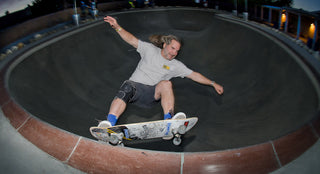We asked our friend Jim Gray, one of the best to ever do it, to write us a few milestones of his rebel brand in the ’90s, Acme Skateboards. Brush up on your history of the original industry outlier who stayed steadfast to his values and pushed against the corporate skateboarding status quo.
Check out The Hundreds X Acme Skateboards collaboration, available now at flagships, select retailers, and the Online Shop.
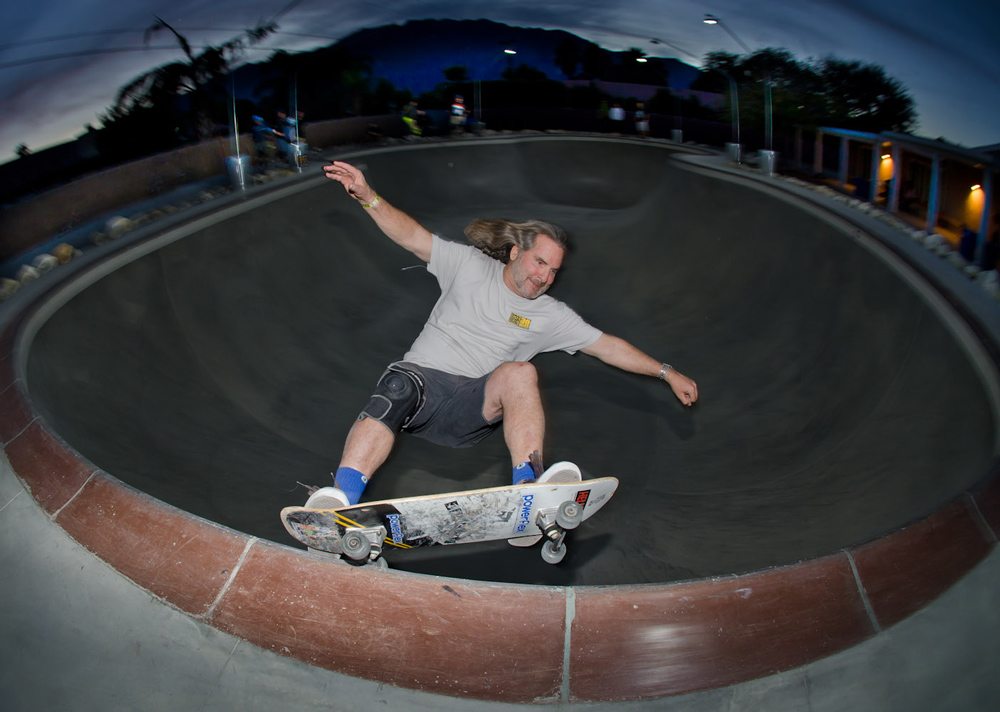
Jim Gray still goin’ strong in 2015. Photo by Lorrie Palmos.
1991
Acme launches and introduces “Your Pro Model,” where you signed your name on the board and had your own model. Some of the ad copy includes “There are about 220 Pro Models Available today, and our competitors are giving them away faster than you can keep up with, so you better get your own Pro Model Quick, before they go out of style!” We were mocking the lunacy of the time.
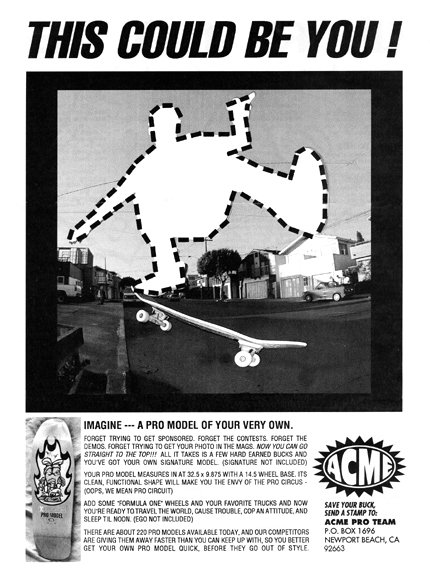
1993-1994
Acme takes the back cover ad, Contents page ad, and Letters column at Transworld Skateboarding Magazine, switching all ads from black and white to color and negotiating a great deal promising them to be the “Pied Piper” leading all the followers to join suit. We ended up changing the magazine from mostly black and white to color in a matter of months.
We were the big winners with creative ad space and positioning no one else could now get. We continued breaking all the rules, starting manufacturing by screenprinting our own boards as well as others, sponsoring team riders from all aspects of skateboarding, not just street skating. Believe it or not, it was a big deal in 1994 showing a guy riding a pool. We promoted our team riders’ high placings in contests while others were trying to play down contests so they could make more video pros. In the only poll ever taken, our ads were voted far and above the #1 ads skaters looked forward to seeing in each issue.
“We made statements, showed products, and laughed at ourselves and everyone else.”
We were growing and pissing off the industry who were all just doing the same old boring sequence ads of a guy doing a trick—we made statements, showed products, and laughed at ourselves and everyone else. We were having a good time and ready to step further into the manufacturing game.
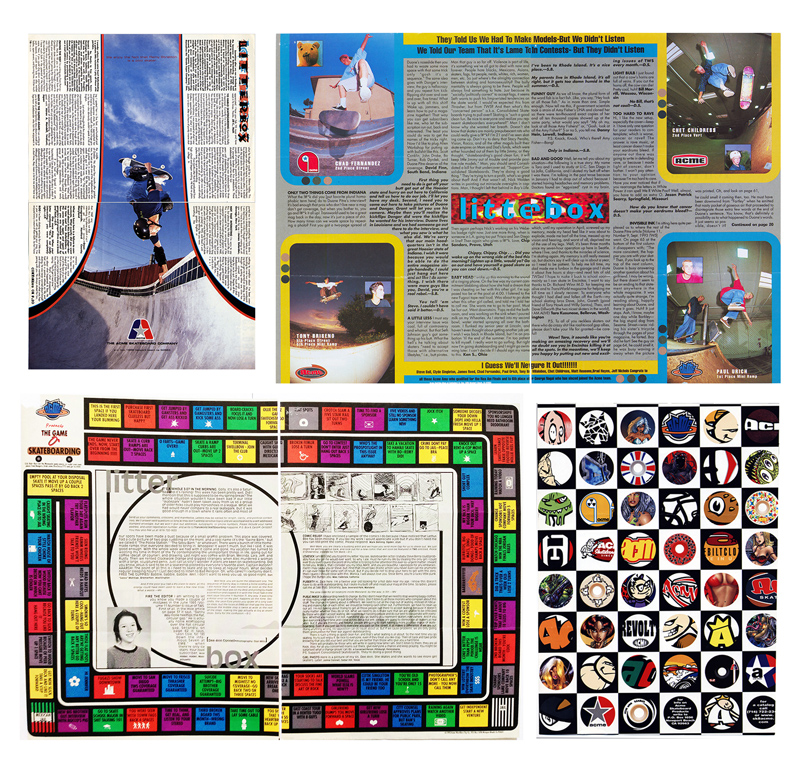
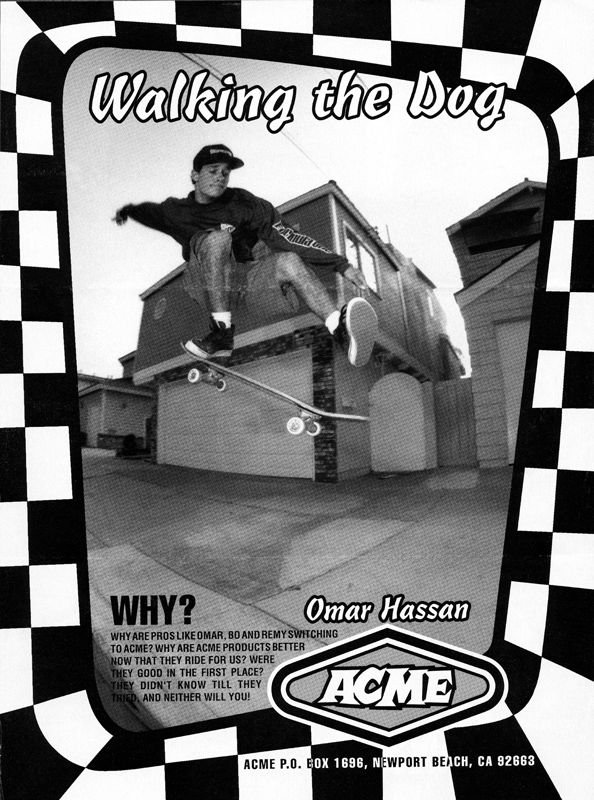
This is 1994 in our Acme Warehouse mini ramp. This was just typical of another day at Acme.
1995
Acme Builds its own factory. We made 10,000 boards in the first 6 months and 10,000 in the next 6 weeks. We had 24 presses and could press about 96 boards an hour or approximately 768 boards in an 8 hour shift.
I was the only pro skater to ever build a major manufacturing plant. Most of my competitors were marketing companies that never built a thing. We were very proud as our goal was never to be a marketing company, but a true skateboard manufacturer, and we had finally achieved that.
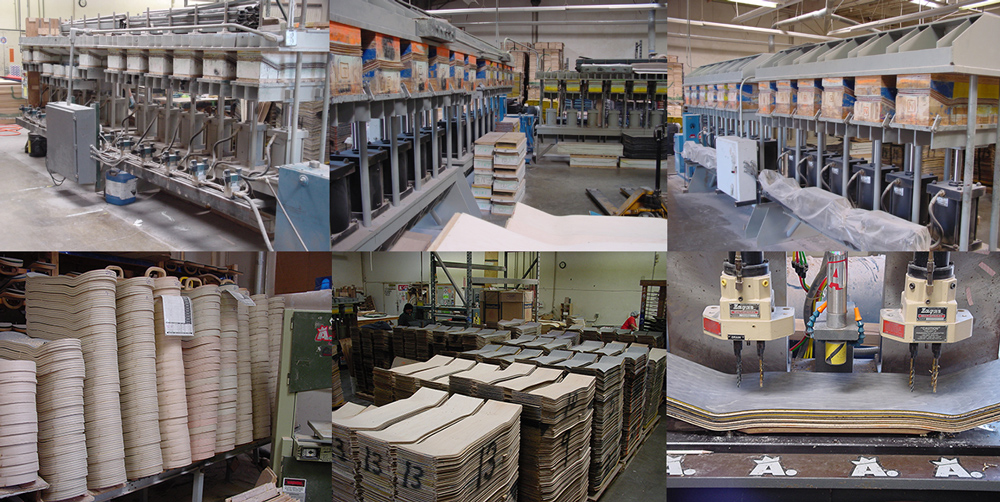
1997
Here’s a video that was a preview for a full length video we did in 1997. It was called Hakkuh.
We did many videos over the years. What was usually different with ours than many others at the time is we showed all types of skating from street to bowls, ditches, pools, etc… that was just not done in 1997. At the time, it was only cool to show street skating, but we weren’t having any of that BS, we were a skateboard company and supported all types of skating.
1998-2008
During this time, we still sold some Acme Decks, but shifted primarily to manufacturing decks for companies such as Birdhouse and Alien workshop. We owe our survival until 2008 primarily to those two companies for giving us work to keep our factory busy and employees paid. Chris Carter from Alien Workshop was the primary reason we survived as long as we did, and I will forever owe him for that. During this time with World Industries at the helm once again (surprising isn’t it?) our next challenge was overseas manufacturing. Large brands such as Girl, Flip, and others were importing hundreds of thousands of Chinese decks and not labeling them “Made in China” as required by law, but no one was doing anything about it. I found myself once more being one of only a few people who would speak up about the issue and the most proactive to find a solution. The consumers were paying the same price, but getting lower quality decks and the companies were making massive additional profits.
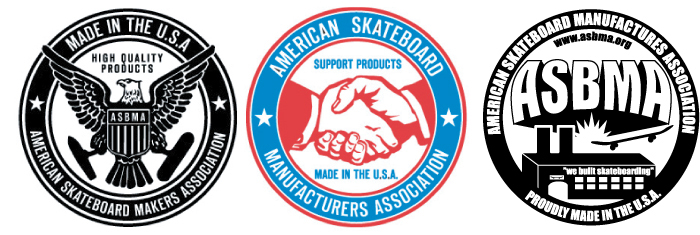
I had a historic meeting at my office with nearly 20 US Skateboard Manufacturers where I tried to get them all to contribute like $1000 each so we could at least hire a legal firm to send letters off notifying the companies not labeling that they would be sued if they continued to break a law that was destroying our factories. I knew the window was short before people would stop caring, and sadly no one would really join me in the battle. Soon many of those people in that room had their equipment auctioned off as they filed bankruptcy and many others quickly setup factories in China and most in Mexico.
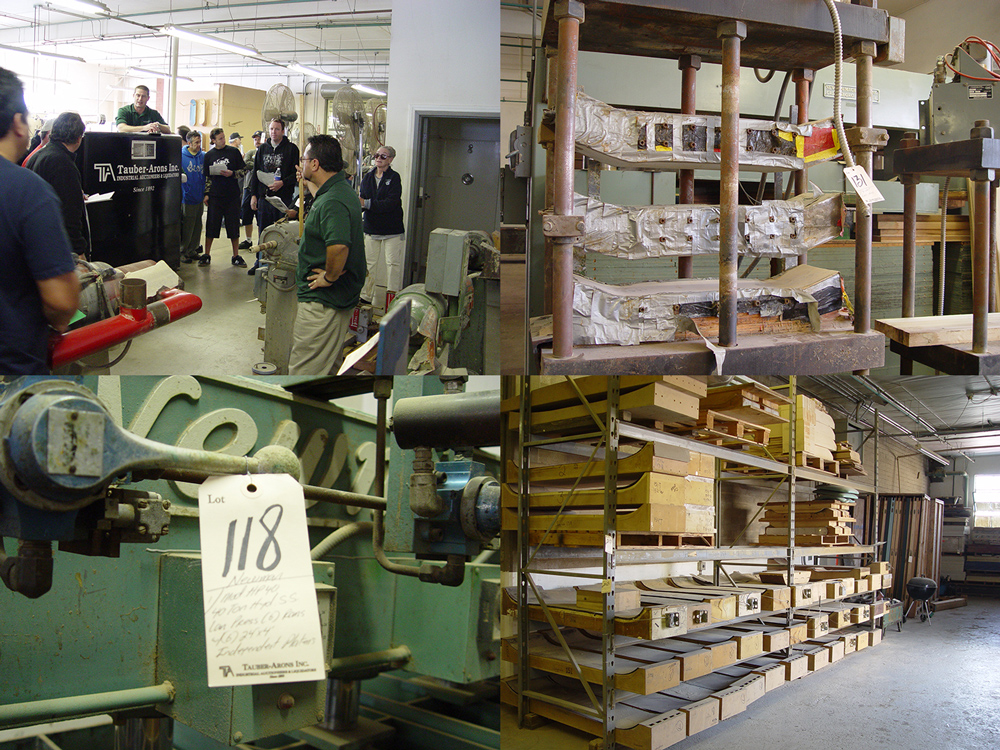
The Taylor Dykema Skate Factory Auction in 2006.
Today, only two people that were in that room that day still have factories operating in the USA, all others have fled the country.
That was not even a consideration to me, I loved skateboarding too much to make the business part of it more important than the quality and enjoyment of my life, so when it became completely impossible for us to pay the rent, we closed our factory in 2008, and I began printing stickers and banners exclusively, something we already did in our factory for about the last 15 years prior to that.
Life became simpler for me, but I sure do miss making the best skateboards in the world.
2016
Acme Skateboards partners with The Hundreds for The Hundreds X Acme Skateboards collaboration. It is available now HERE!
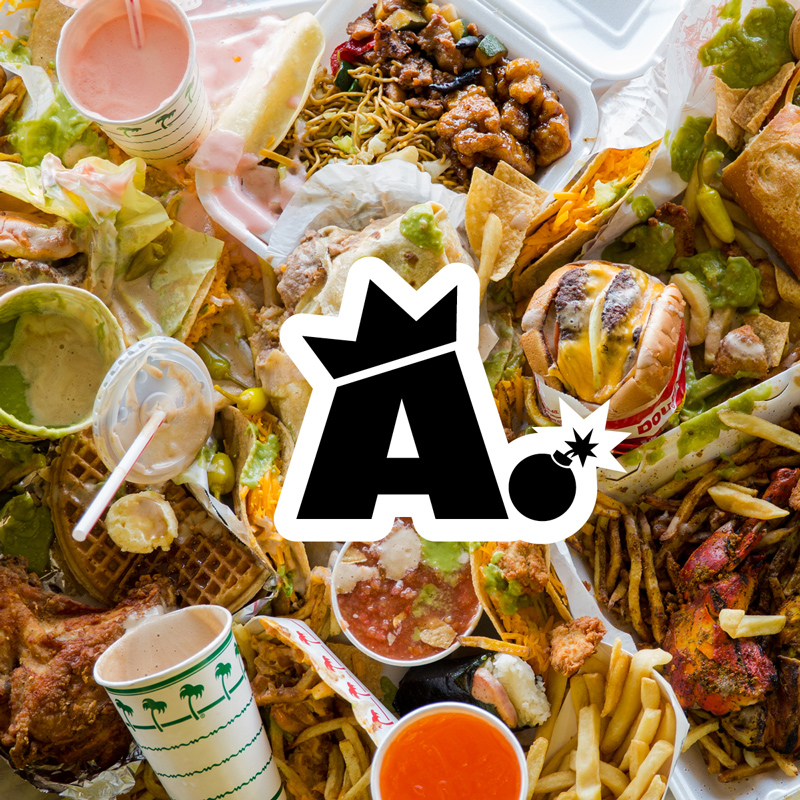
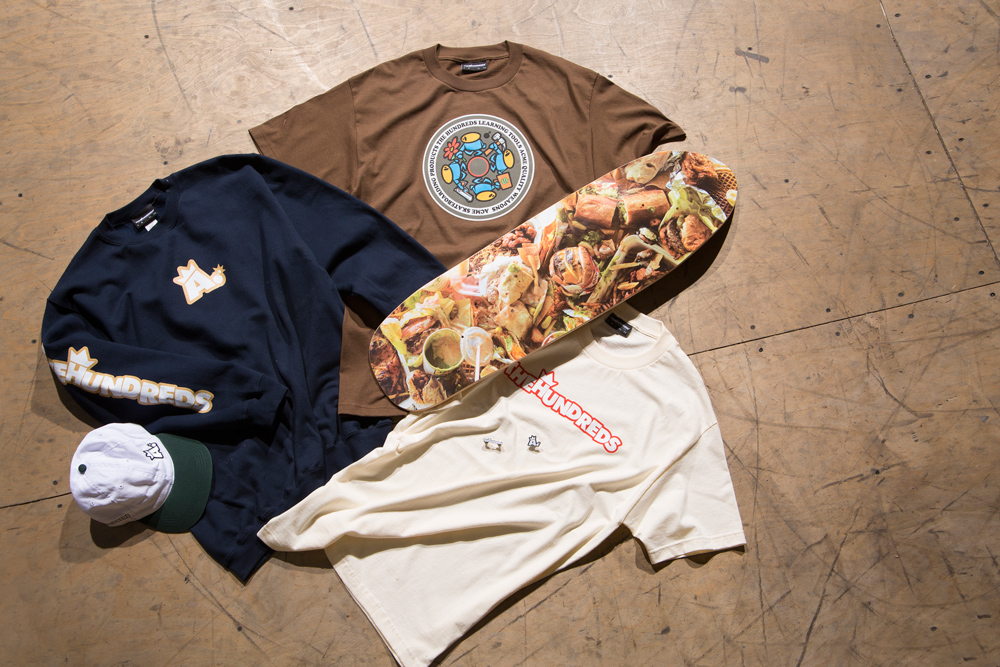
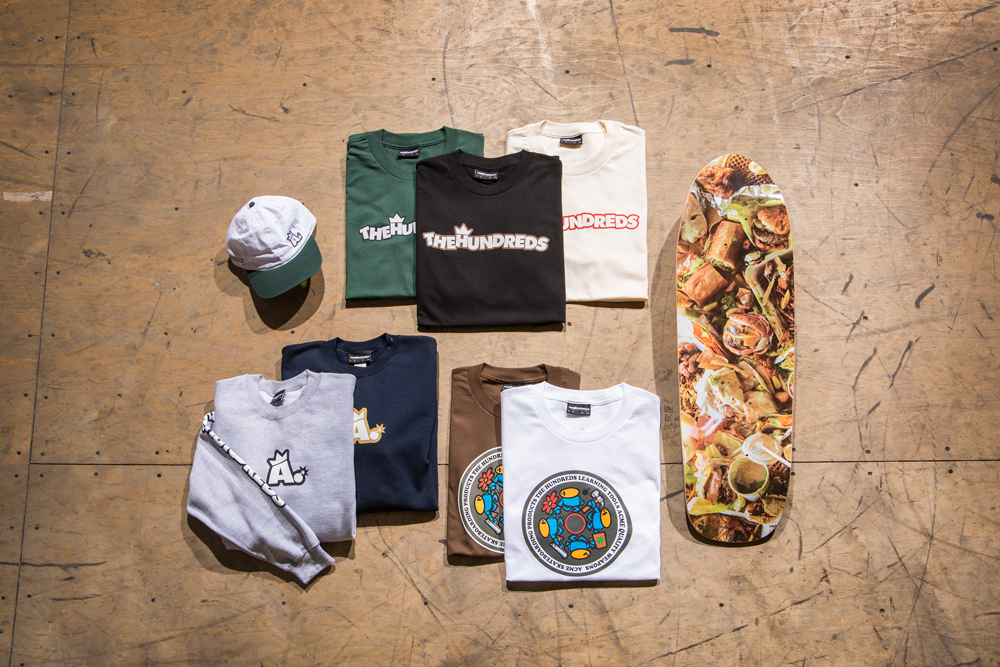
***











